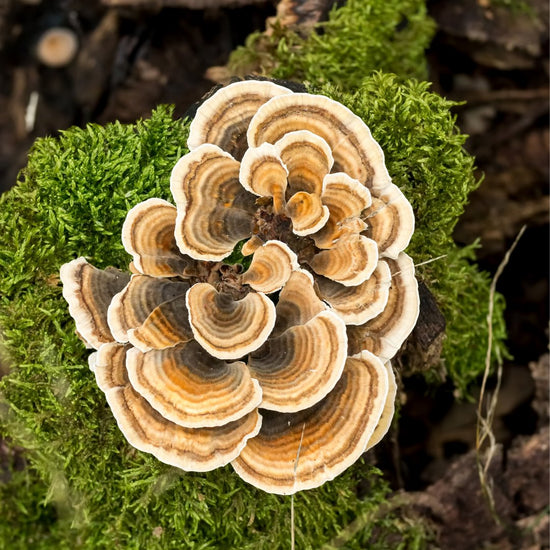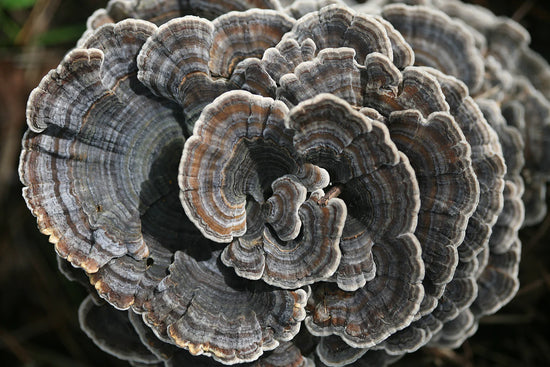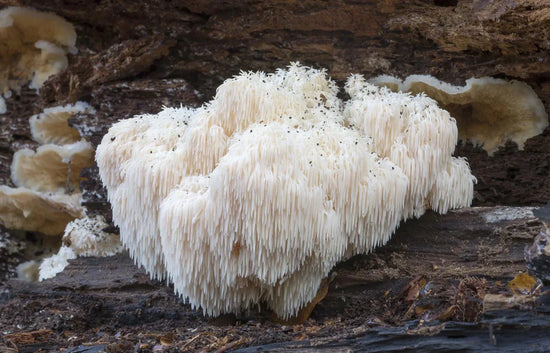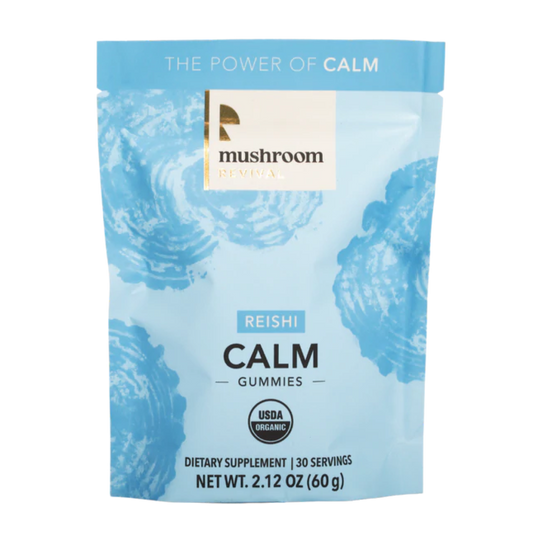Let's Compare Two Different Types of Cordyceps Mushrooms
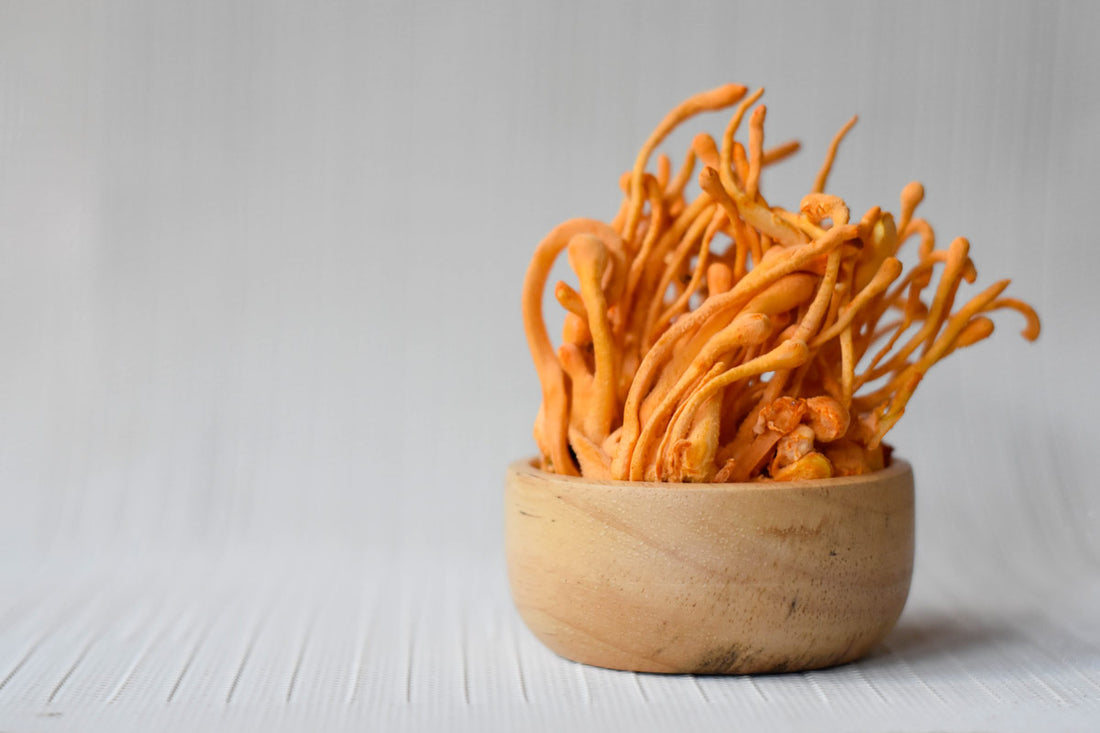
Mushrooms are constantly a part of the natural cycles of destruction and re-creation. Cordyceps show this most clearly in their own dramatic fashion, and it is no surprise that their intriguing behavior has drawn the attention of humans for centuries. Cordyceps are not only known for their parasitic lifestyle, but also for their health benefits, and have been used throughout history to support the body in many ways.* There are many different varieties of cordyceps, and nowadays they are becoming more popular in the western world, while at the same time becoming more scarce and therefore extra valuable in their native lands.
Classifying the Different Types of Cordyceps
There are over 400 species of Cordyceps that grow all over the world, and they are categorized into a variety of families. For example, types of Cordyceps that are fleshy and colorful, such as Cordyceps militaris, are in the Cordycipitaceae family. Species of cordyceps that are darker in color and have a tougher structure are in a family named Ophiocordycipitaceae; this family includes Ophiocordyceps sinensis. Additionally, there is the genus Elaphocordyceps, which is a subclade of the Ophiocordycipitaceae family. The genus Elaphocordycepsis specific to types of cordyceps that are parasites to species of fungi in the genus Elaphomyces.(1) The different types of cordyceps are broad and plentiful. Today we will focus in detail on a couple species that you may have heard of, or seen before, whether it be in mushroom tinctures, mushroom farms, or growing in the wild.
Out of all these many different types of cordyceps, Ophiocordyceps sinensis and Cordyceps militaris(pictured above) are the main species used in herbalism and found in mushroom supplements.* These types of Cordyceps are known to be beneficial due to the many constituents they contain including cordycepin, which was first found in Cordyceps militaris, as well as cordycepic acid, nucleotides, polysaccharides, sterols, and fatty acids and more!* (1) Cordyceps may help support healthy kidney and liver function.* Furthermore, cordyceps may also be beneficial by promoting oxygen consumption and blood flow to support athletic performance.*
Cordyceps have been used throughout history in China as well as in Tibet.(4)In Chinese history, the use of Ophiocordyceps sinensisis known to be documented as far back as 1694.(2) Ophiocordyceps sinensis thrives in high altitudes and is found growing in Nepal, Tibet, India, Bhutan and China.(3) This mushroom is a parasite to the moth larva Thitarodes (Hepialus). (4) Ophiocordyceps sinensis is already such a treasure in its native lands, and with more awareness of this mushroom spreading throughout the world, Ophiocordyceps sinensis is in particularly high demand and therefore its population has been decreasing.(1)Fortunately, Cordyceps militaris is another good option for those who are seeking out these mushrooms.
Cordyceps militaris mushroom grows wild in the United States as well as in Europe.(2) Similar to the other different types of cordyceps, this species parasitizes larvae as well, specifically moth and butterfly larvae.(5) Cultivation of Cordyceps militaris began in the US in 1895 and became commercially cultivated on a large scale in Asia the late 1980’s and early 2000’s. Unlike Ophiocordyceps sinensis, Cordyceps militaris is easier to grow because it is not only parasitic but also saprophytic meaning it can grow on substrates such as wood or other organic matter. (2)
Comparing These Different Types of Cordyceps
Now that we’ve explored a bit of the characteristics of each of these different types of cordyceps, we can see they have many similarities as well as differences. Ophiocordyceps sinensis and Cordyceps militaris have similar constituents such as cordycepin and adenosine but it has been speculated that Cordyceps militaris may contain higher concentrations of these compounds, due to the ability of cultivators to control more of the growth factors since it can be cultivated in a lab, not just harvested from the wild. Another one of the biggest differences between these species is their monetary value. Wild Cordyceps sinensis are so valuable that they can cost up to 22,000 dollars per pound.(2) Cordyceps militaris however, can be sold much cheaper, being that in the US it is valued at 16 dollars a pound. Although Ophiocordyceps sinensis such a treasure, one can understand why the increased cultivation of Cordyceps militaris could be very beneficial in order to make these mushrooms more accessible.
Mushroom Revival helps make Cordyceps militaris available by processing them into tinctures. If you’re interested in this mushroom, you can purchase it here and experience it for yourself.* The future of cordyceps is exciting and unknown. There are many more species to learn about and who knows, maybe even more types will be discovered as time goes on.







